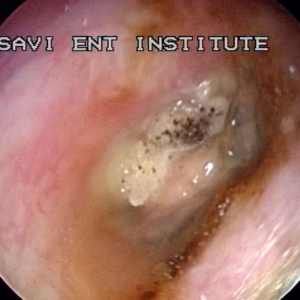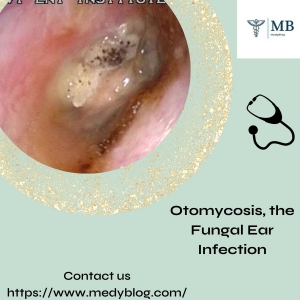In the symphony of health concerns, Fungal Ear Infections may be an understated melody, yet the impact on one's auditory well-being cannot be dismissed. These clandestine invaders, often overshadowed by more common maladies, demand our attention for a harmonious understanding.
Deciphering the Essence
At the epicenter of this auditory conundrum lies the Fungal Ear Infection – an insidious interloper that seeks refuge in the delicate confines of the ear canal. Unlike bacterial or viral counterparts, these fungal intruders, usually of the Candida or Aspergillus varieties, stake their claim with a subtlety that belies their potential menace.
In a hushed ecosystem where moisture and warmth converge, the ear canal becomes a haven for fungi to propagate. The intricate architecture of the ear, a marvel of evolution, inadvertently provides the ideal habitat for these opportunistic invaders.
The Prelude: Symptoms and Signals
Detecting a Fungal Ear Infection requires an attentive ear to the subtle cues the body provides. The overture often begins with mild discomfort, an itch that dances on the periphery of awareness. As the fungal agents proliferate, the crescendo introduces more pronounced symptoms: persistent itching, drainage of fluid with an ominous odor, and a gradual diminuendo of hearing acuity.
Fungal Ear Infections, though typically non-threatening, merit prompt attention. Ignoring the initial whispers of discomfort can lead to a cacophony of complications, including chronic infections, hearing loss, and in rare instances, involvement of surrounding structures.
Navigating the Labyrinth: Causes and Risk Factors
Understanding the labyrinthine nature of causative factors and risk elements is pivotal in the realm of Fungal Ear Infections. While excessive moisture provides an inviting milieu, factors such as compromised immune function, diabetes, or the use of certain antibiotics orchestrate a predisposition to these fungal soirees.
Consider environmental factors as the unseen conductors influencing the crescendo of fungal proliferation within the ear canal. Frequent swimming, humid climates, and improper ear hygiene all compose the intricate score leading to a potential infection.
The Sonata of Diagnosis
Distinguishing a Fungal Ear Infection from its bacterial or viral counterparts necessitates a nuanced diagnostic approach. A healthcare virtuoso, armed with an otoscope, skillfully navigates the auditory landscape, identifying telltale signs of fungal presence – characteristic white, cotton-like patches, or fungal balls lodged in the ear canal.
In some instances, a culture of the ear discharge may be the virtuoso's definitive note, precisely identifying the fungal strain orchestrating the symphony of discomfort.
Harmonizing Treatment: The Therapeutic Score
The crescendo of relief begins with a tailored treatment regimen, addressing both the symptoms and the root cause of the Fungal Ear Infection. Antifungal eardrops, a melodic solution, delicately administered, serve as the principal players in this therapeutic symphony.
Simultaneously, maintaining an optimal environment within the ear – dry, clean, and devoid of irritants – becomes the rhythm section, ensuring a sustained diminuendo in the fungal population.
Coda: Prevention and Resilience
As with any symphony, the final notes linger in the echoes of prevention and resilience. Embracing practices that keep the ear's harmonious ecosystem in balance – meticulous ear hygiene, avoidance of excessive moisture, and prompt treatment of predisposing conditions – compose the epilogue to the tale of Fungal Ear Infections.
In conclusion, the narrative of Fungal Ear Infections invites us to listen attentively to the whispers of discomfort, to decipher the subtle nuances of our body's symphony. With a harmonious blend of awareness, early intervention, and preventive measures, we can ensure that the melody of our auditory health remains unsullied by the discordant strains of fungal intrusion.




